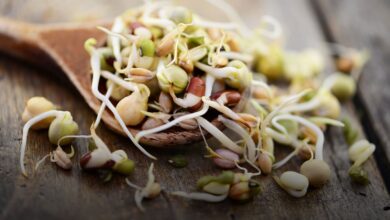These health benefits and how to use them

Used by humans since ancient times, and even animals since time immemorial, clay is among the most popular natural products. A true gift from nature, this multi-colored mineral has multiple specific properties and brings numerous benefits.
Whether for therapeutic use, house building or pottery making, clay and man have always maintained a close relationship. This link is found in Greek and Egyptian mythology, which says that man was created from clay.
Briefly
- Clay has various properties, from absorbing toxins to anti-inflammatory and healing effects;
- It can be used in various ways, both externally (infusions, baths, compresses) and internally to treat digestive disorders;
- Clay is beneficial not only for humans, but also for animals and even for gardening.
Buy clay at the best prices
Amazon Affiliate Link. Prices mentioned in this article are indicative and subject to change.
Clay: earthy or mineral?
Of natural origin, clay results from the decomposition of the parent rock by water. Naturally rich in minerals and trace elements such as calcium, magnesium, sodium, iron, potassium and silicon, this clay soil is waterproof, elastic and oily to the touch.
The nature of the parent rock and climate will give it its quality and color. It can be green, white, red… and its color varies depending on the iron oxide it contains. It is important to know that different types of clay can match the same color. So you should choose the clay that best suits your needs.
Clay is used in therapeutic and cosmetic care
Kaolinite, white in colourIn France, it is extracted mainly from Brittany and the Limoges region, where it is used in the porcelain industry.
This clay has a strong absorption capacity, meaning it has the ability to attract toxins like a magnet to remove them from the body, and plays an important role in regulating acid-base balance and managing digestive disorders. This clay, which has anti-inflammatory properties, works remarkably well in mouth and throat conditions, such as gargling.
It also has a softening effect, making it a first-class product for external use on sensitive and fragile skin, such as diaper rash in babies.
Red clayThe illite type gets its color from the presence of ferric oxide. It has great absorbency, meaning the clay will act like a sponge, and will absorb and trap toxins; It is mainly used externally: ideal for giving a boost of radiance to your skin thanks to its mattifying power, it is especially recommended for all skin conditions such as boils, cysts and acne, by absorbing impurities, toxins and pus. It also plays a role in improving blood circulation.
A decongestant, it is useful in treating joint injuries such as sprains and strains.
Green clay It is the most famous and most widely used. Illite, smectite, and montmorillonite types are the most common. Montmorillonite has the strongest attraction, followed by illite and kaolinite.
Green clay has many advantages: absorption, cleansing, detoxification, and remineralization. It is very rich in minerals, calcium, magnesium, sodium, silicon…
For external use (bath, compresses, poultices, powder, ointment, enema, shampoo) it is laxative, analgesic, anti-inflammatory, moisturizing.
For internal use, it is a great ally in the fight against digestive disorders such as bloating, flatulence, reflux and stomach ulcers. Versatile green clay can be used in cosmetics, human health, veterinary use, or even in the garden.
Health benefits
Clay can be used internally or externally, or both at the same time. It should not be considered a placebo, because it can reveal underlying diseases that were not initially suspected (for example, clay applied to a splinter can draw out pus) and cause unexpected reactions.
Clay has power cleaning AMAZING: It acts like a sponge filled with water, drawing toxins and unpleasant odors out to be trapped. Its effect is not limited to simple deodorizing, because when used internally, it can work throughout the digestive system and free it from gases and acids… This is how its absorbent power can also be used to eliminate the chemical smell of chlorine in city water. .
she also absorbentWhich means that toxic elements are pumped out of our bodies and brought to the surface. It is an antiseptic, thanks to its high silica content. It is able to protect healthy tissues, while cleaning the tissues from unwanted bacteria.
she healing : Facilitates tissue regeneration, while placing a protective layer on the lesions to protect them from possible infection. Wounds close more quickly, leaving a barely visible scar.
Finally, she Remineralization. All types of clay contain trace elements in different proportions. Whether used internally or externally, it releases them into the body in order to restore acid-base balance, which is important for the body, because imbalance is often the cause of many disorders.
External uses: what are we talking about?
Depending on the care provided, it is possible to use different techniques: baths, compresses, compresses, gargling, pudding, etc. Its effect can be enhanced by combining cabbage leaves with essential oils, etc.
These preparations are prepared in a vessel made of pottery, glass, wood and ceramic (do not use vessels made of iron, which is an oxidizable metal and does not mix chemically with clay).
- Public bathrooms. These are not mud baths as you can do in thalassotherapy, but regular baths enhanced by the presence of mud. These baths can be supplemented with essential oils, sea salt or medicinal plants.
- Local baths (Feet, legs, hands, forearms) It is done in two ways: either with hot water, or alternating between hot and cold water.
- Compresses It is prepared in a bowl: cover the clay slightly with mineral water and leave it until the water is completely absorbed. Mix the ingredients well to obtain a soft and elastic creamy clay. Apply it to the area to be treated in a thick layer of 2 cm. If the area to be treated is a wound, eyes, or hairy area, insert the gauze between the skin and the clay.
- Compresses. The preparation should be slightly looser than compresses. Dip a cotton cloth in the liquid clay, squeeze it roughly, then apply it to the skin. This method allows you to cover a larger processing surface.
- Gargle. Simple and effective: Pour a teaspoon of clay into a large cup of slightly mineral water. Mix well before gargling.
Eating dirt (geophagy) is widespread in some cultures (Africa and South America), in order to balance a diet deficient in minerals. It is recommended as a remedy (geotherapy) in many natural treatments: anemia, mineral purification, digestive disorders. It is consumed in the form of mud water (or milk), mud water, pellets, pieces or tablets:
- Mud water (or clay milk) has a gentle effect for internal uses and is obtained by pouring the required quantities of clay into a cup of slightly mineral water. Mix well and leave it overnight. Drink the water on an empty stomach the next day, taking care to leave no clay residue at the bottom of the cup. Dosage: For adults, one teaspoon in a glass of water; For a child under 12 years old, half a teaspoon.
- Mud water It is prepared in the same way as mud water. Leave to rest overnight. The next morning, mix the preparation again, then drink it.
- meat balls Or cutting it is highly recommended when consuming muddy water causes nausea or constipation. The latter is better tolerated. The pieces are purchased from premium crushed clay. The balls are prepared from ultra-fine clay and shaped by hand.
Also for animals!
Animals have it in their natural environment. Usually, they instinctively resort to this remedy, to treat their wounds and mud water wraps as soon as they feel sick.
For several years, scientists have been interested in the therapeutic benefits of geophagy. Thus, in Peru it was discovered that primates use clay clay for therapeutic purposes (in cases of stomach disorders, as a mineral supplement or to kill parasites). If wild animals use clay, let's not forget our companions: cats, dogs, horses… Clay is a valuable aid in maintaining their health: clay water can be used to treat diarrhea and other intestinal problems, and as poultices for wounds and strains.
In the garden
Arborists use it to help trees resist scab, heal their wounds and allow for better healing. Clay helps indoor plants regain their vitality, and also promotes the growth of grafts…
Shopping tips
Whether in paste form, in ready-to-use strips, in tablets, powder, or in fine, ultrafine or aerated powder, choose the clay that matches your application. Make sure nothing is added to the clay and water, and that it is 100% natural. Sun drying is a guarantee of quality, as it is a natural drying process, which makes the clay more expensive, and kiln drying is preferred which can deteriorate the quality of the clay when heated to a high degree.
Some practical advice
- Never cook the clay, you can only add hot water to the mixture.
- Throw away any poultices or poultices that have been used, as they are full of toxins.
- Essential oils should be added at the last minute and mixed well with the lotion.
- Wash the treated area with pure water, infusion, or aqueous solution after each application.
- Never let clay get on the skin.
(Marks for translation)Clay: earthy or mineral?
These health benefits and how to use them


